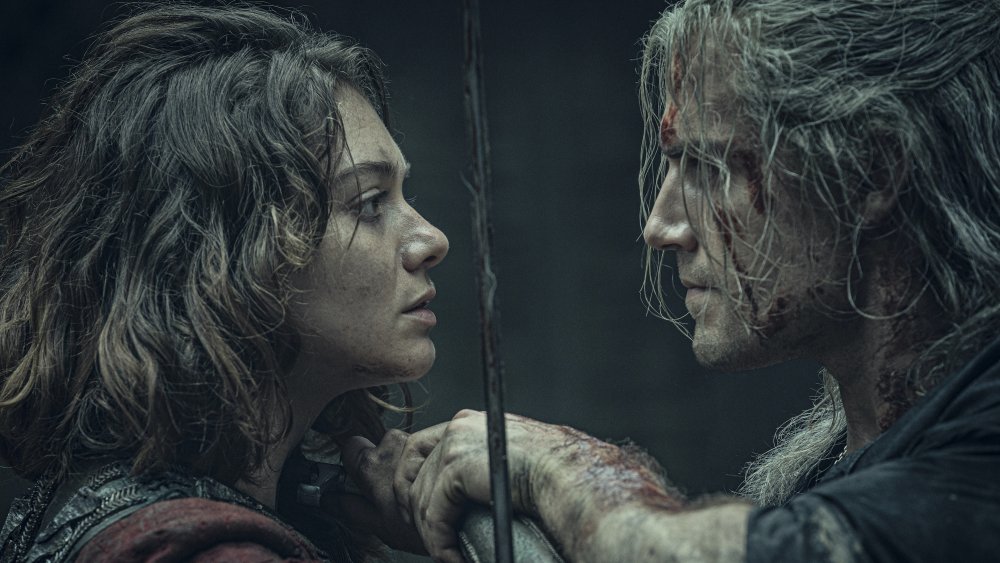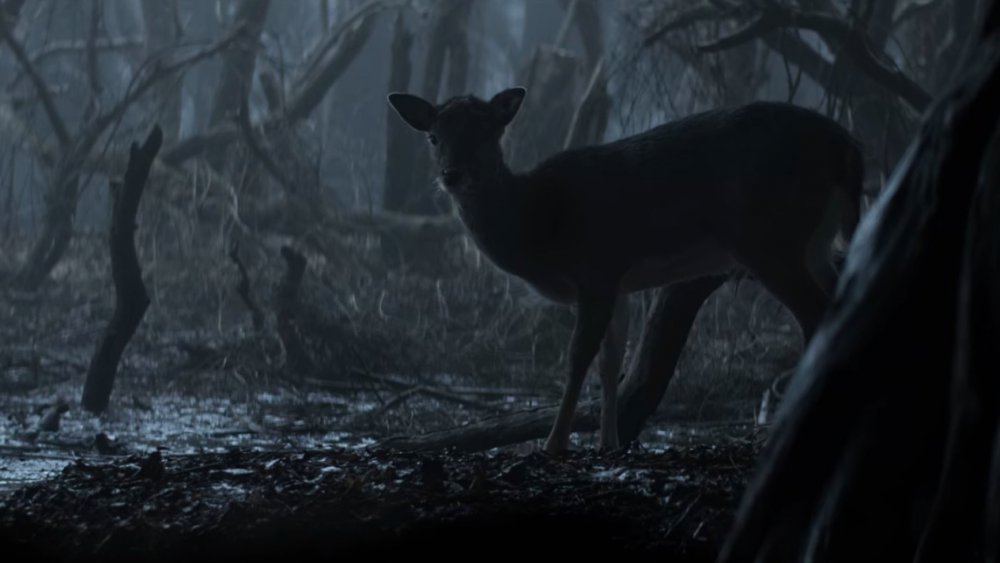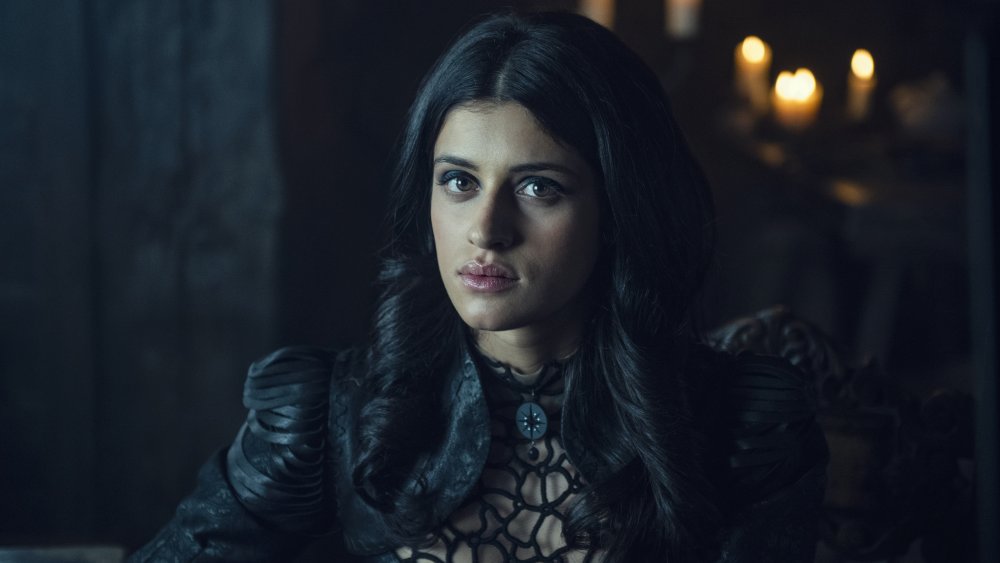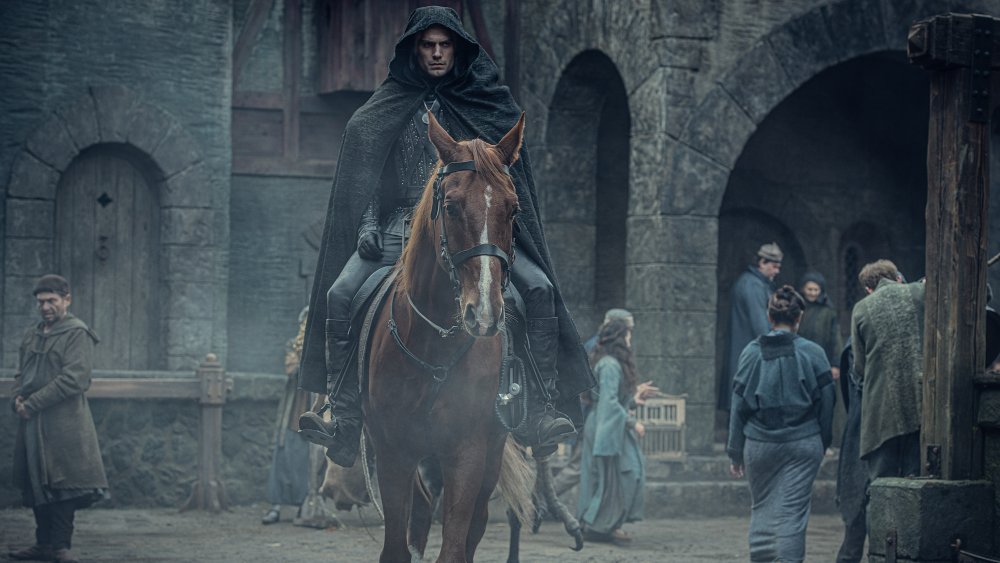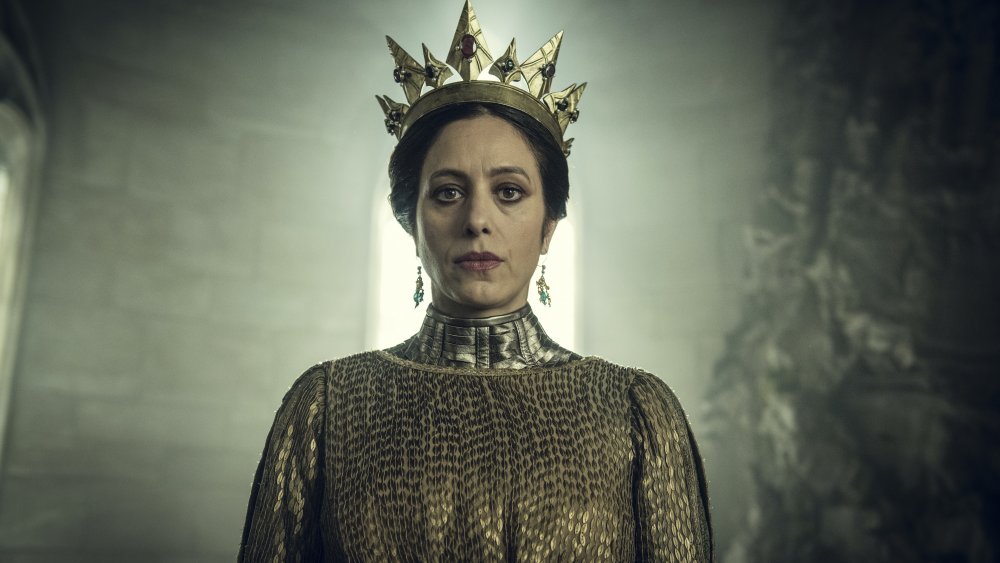Things You Never Noticed In The Witcher's First Episode
With its multiple-timeline structure and its dense, fascinating mythology, season 1 of The Witcher deserves to be rewatched. While we're all waiting for season 2, now is the perfect time to go back and experience the misadventures of Geralt of Rivia one more time. Not only will you get to bask in the glory that is Henry Cavill and the infuriating earworm that is "Toss a Coin to Your Witcher," but you're also sure to notice a lot of things that you didn't before.
Take the first episode, for example. Even the title, "The End's Beginning," means so much more upon rewatch, now that we know the beginning of Princess Ciri's (Freya Allan) travails takes place at the end of Geralt's (Cavill) journey. Here are some other things you may not have noticed about the first episode of The Witcher on that first go-around.
The Witcher's first episode has the same opening as Twilight
Let's start with more of a silly observation than something deep and tied to the complex Witcher lore. Catherine Hardwicke's 2008 film Twilight and the Netflix adaptation of The Witcher both open with an innocent baby deer being attacked by a monster of sorts. You'd have to be a fan of both to catch this, but it's fun to think about, nonetheless. In Twilight, we see a deer get hunted by the "vegetarian" Cullen family of vampires. In the first episode of The Witcher, a baby deer is almost killed by a kikimora before Geralt of Rivia intervenes and slays the spidery beast.
Coincidence? Yeah, it probably is a coincidence. There is, however, also a Twilight Easter Egg in The Witcher 3 video game: One of the books in a bookshop at the beginning of a quest contains an obvious allusion to Edward, Bella, Jacob, and the plot of Stephenie Meyer's novel Breaking Dawn. So, maybe the two franchises are cosmically linked.
Yennefer is not in The Witcher's first episode
Yennefer of Vengerberg (Anya Chalotra) such an integral part of the first season that you may not realize she actually wasn't introduced until the second episode. There are only two timelines in the episode, instead of three, and Yennefer isn't even mentioned. In fact, until Ciri's powers are triggered at the end of the first episode, it is kind of implied that only men do magic in this universe ... but as audiences keep watching and find out, that is not true. Only men train to become Witchers, while both men and women with innate magical ability can hone their abilities as sorceresses, sorcerers, or mages.
Since this is a Netflix adaptation, and therefore meant to be binge watched, it makes sense that The Witcher withheld Yennefer's origin story. If the pilot had tried to introduce all three characters at once, it would have felt a bit rushed. Instead, they trusted us to smash that "next episode" button and continue the story.
There a couple video game Easter Eggs in the first episode
Fans who played The Witcher game probably caught this immediately, but for those of us who came to the series with fresh eyes, it should be noted that Geralt's ability to push people around in the town square is not just general Witcher magic. His telekinesis is a specific ability, or sign, called the Aard Sign. Other signs in The Witcher game include the Axii, a hypnotic/mental manipulation spell; Igni, the ability to shoot flames; and Quen, a type of shield charm.
It's pretty cool that the series includes details like this, even if it doesn't name them. The various off-hand references and Easter Eggs in The Witcher enhance the world-building without laying on exposition too thick, which is part of what makes the series so successful. Queen Calanthe (Jodhi May) even mentions "The Wild Hunt" in the first episode, which fans of the games know is the titular antagonist of The Witcher 3: Wild Hunt.
Queen Calanthe's age is a clue to the timelines in The Witcher's first episode
If the multiple timelines in The Witcher season 1 threw you for a loop, you probably missed this very important detail in the first episode. The teenage Princess Ciri of Cintra reminds her grandmother, a seasoned warrior queen, that she won her first battle when she was Ciri's age. Later in the episode, Renfri laments her wasted potential to Geralt and, to prove a point, comments that Queen Calanthe of Cintra has just won her first battle. That proves that Geralt's scenes are taking place decades before Ciri's scenes.
Another, even subtler, clue about the multiple timelines in the first episode happens after Princess Ciri's introduction. The camera holds on Ciri's face while we hear Stregobor (Lars Mikkelsen) say that "destiny has many faces" and the scene transitions back to Geralt's storyline. That is an early hint that Ciri is both part of Geralt's destiny and his future — his end's beginning, so to speak.
